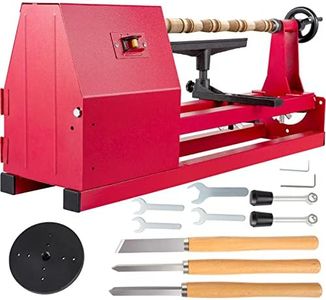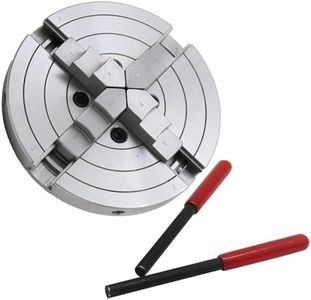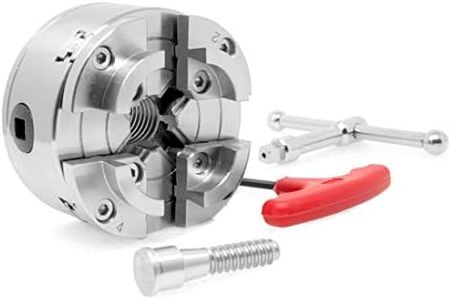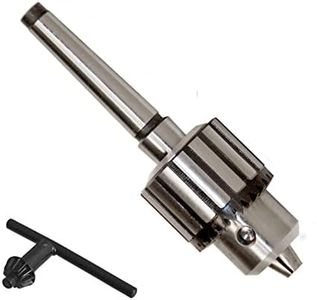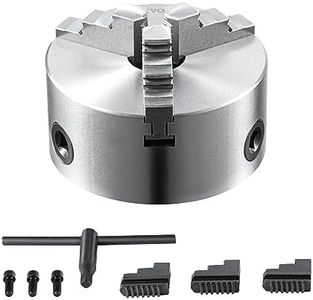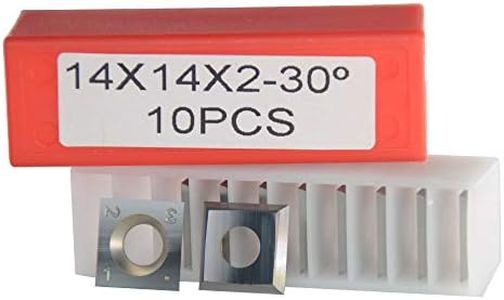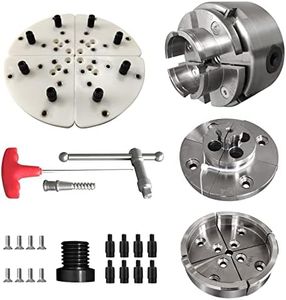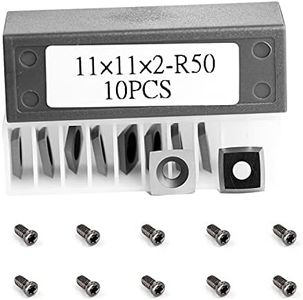We Use CookiesWe use cookies to enhance the security, performance,
functionality and for analytical and promotional activities. By continuing to browse this site you
are agreeing to our privacy policy
10 Best Wood Lathes
From leading brands and best sellers available on the web.Buying Guide for the Best Wood Lathes
Choosing the right wood lathe is essential if you want to enjoy woodworking and achieve precise, smooth results. Wood lathes come in many shapes and sizes, designed for different projects and skill levels. Before making your choice, think about what you plan to make, the space you have, and how much control and power you’ll need. Understanding the key specifications can help you pick a lathe that makes your work easier, safer, and more enjoyable.Swing Over BedThe swing over bed is a measurement that tells you the maximum diameter of a workpiece the lathe can handle. This spec is crucial because it limits the size of the objects you can turn. Smaller lathes might have a swing of about 10-12 inches, which is suitable for making pens or small bowls, while larger lathes can have a swing of 16-20 inches or more, letting you make bigger bowls or furniture components. To pick the right swing, think about the largest items you want to create—choose a swing that's big enough for those projects but not so big that it takes up unnecessary space.
Distance Between CentersThis spec measures how long a piece of wood can be mounted between the lathe's headstock and tailstock. It matters for people who want to turn longer items like table legs or baseball bats. Shorter distances (around 12-18 inches) are perfect for small spindle projects, while longer ones (30 inches and above) give you flexibility for larger pieces. Decide based on the typical length of your planned projects, and if you only intend to make small items, a shorter distance will save space and potentially offer better stability.
Motor PowerThe motor power, usually expressed in horsepower (HP), determines how much force your lathe can deliver as it spins the workpiece. More power lets you work on larger, heavier pieces without the motor stalling, and also means you can remove material faster. For basic small items, a motor with 1/2 HP is often enough; for bigger projects or harder woods, look for 1 HP or more. Choose a motor size that matches the size and hardness of the wood you plan to work with—if you only make small crafts, you won’t need a large motor.
Speed Range and ControlLathes can operate at different speeds, measured in revolutions per minute (RPM), and having adjustable speeds is important for safely and smoothly turning various types of projects. Most lathes offer a speed range—lower speeds for bigger, unbalanced items, and higher speeds for fine, detailed work. Some lathes let you change speed manually with belt changes, while variable speed control allows for easier and more precise adjustments with a dial. Think about what you’ll be turning: variable speed is handy if you work on a variety of items, while a fixed range with manual change may be fine for beginners or specific uses.
Lathe Size and WeightThe overall size and weight of the lathe affect where you can put it and how stable it is while running. Heavier lathes tend to vibrate less and give smoother results, which is especially important for larger workpieces. Compact, lighter lathes are portable and suitable for small workshops, but may limit project size and stability. Choose a size and weight that fits both your workspace and the types of projects you plan to tackle; for small crafts, a benchtop lathe may be ideal, while for larger, professional work a heavier floor-standing lathe is better.
Headstock and Tailstock FeaturesThe headstock holds the spindle and motor power, while the tailstock supports the other end of your workpiece. Useful features include swiveling or rotating headstocks for easier access, and easily adjustable or lockable tailstocks for different-length projects. These features can make your work more comfortable and versatile, especially if you expect to do a range of project types. Consider what kinds of pieces you'll make—if you want flexibility or easy adjustments, look for quality headstock and tailstock designs.
